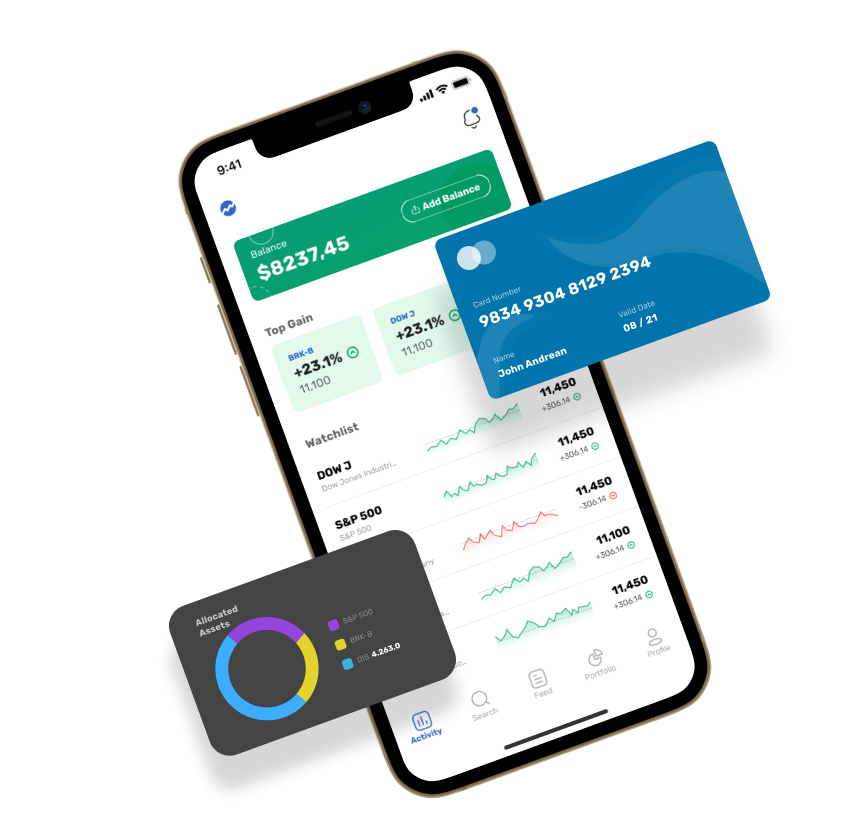20 Top Pieces Of Advice For Deciding On AI Stock Analysis Sites
20 Top Pieces Of Advice For Deciding On AI Stock Analysis Sites
Blog Article
Top 10 Tips When Evaluating The Cost And Price Of Ai Stock Predicting/Analyzing Platforms
To get the most out of your investment it is important to know and compare pricing for AI software that predicts and analyzes stocks. Pricing structures differ widely, and it is important to understand what you're getting for the price. Here are ten top suggestions to help you analyze the price and cost of these platforms.
1. Understanding the Pricing Model
Subscription-based: Check if the platform charges an annual or monthly fee and what features are available at each tier.
Pay-per-use : Make sure that the platform charges according to usage (e.g. requests for trades, for data, or forecasts).
Freemium model: Check whether there's a no-cost version that has limited features and a premium version that includes premium features.
2. Compare Pricing Levels
Review the features of the various price levels, e.g. Basic, Professional, Enterprise.
Scalability: Ensure the pricing levels align with your needs, regardless of whether you're an individual trader or professional.
Upgrade flexibility: Discover whether you can effortlessly upgrade or downgrade as your requirements alter.
3. Evaluate Hidden Costs
Data fees are a matter of fact. Find out if you have to pay extra for access to premium data.
Brokerage Fees: Find out if your platform charges extra costs for trade execution or integration.
API usage: Determine whether API access costs are higher or if API usage is frequent.
4. Demos and Trials are Free to Download
Trial period: Look for websites that offer the option of a trial or demo so you can check out the features before deciding to make a decision to commit.
Review the limitations of a trial trial. Does it include all features?
Option of no-commitment: Make sure that you are able to cancel your trial if it doesn't fit your needs.
5. Find the most recent discounts and offers
Annual discounts: Verify if the platform offers discounts for annual subscriptions compared to monthly plans.
Referral programs. Make sure the platform gives discounts or credits to refer users.
Bulk or Institutional Pricing If your company is a large one it is possible to ask about bulk and institutional pricing.
6. ROI (Return on Investment): How to evaluate the return?
Cost vs. value: Determine if the platform's features and predictions justifies the cost. It can save you money or improve your trading decision-making.
Performance track record - Research the platform's success rate or user testimonials to determine its potential ROI.
Costs of alternative platforms: Compare the costs of the platform against the possible cost of not utilizing it (e.g. not utilizing opportunities, time spent on manual analysis).
Review Policies on Cancellation and Refunds
The cancellation policy should be followed: Ensure you are able to cancel your subscription without penalty, or with no hidden fees.
Refund policy: Make sure to check whether the platform allows refunds on unused parts of your subscription.
Auto-renewal: Check if the platform automatically renews your account and the best way to remove yourself from the subscription.
8. Price transparency is essential.
Price page that is clear Make sure that the platform is equipped with a clear and precise pricing page with no hidden charges.
Customer Support: Call customer support to clarify any pricing information that is unclear or extra cost.
Contract Terms: Check the conditions of service to determine if there are any long-term agreements or penalties.
9. Compare to Competitors
Comparing features: Make sure you're getting the best price and platform by comparing it to its competition.
User reviews: Look at the feedback of users to determine if the platform's cost is a good value.
Market positioning: Look at the pricing and decide if you are getting a platform that is within your budget.
10. Evaluate Long-Term Costs
Price increases: Find out whether there is a pattern of price increases and the frequency at which they occur. often they occur.
Check whether you have new features that are available in your current software or if you should consider upgrading.
Scalability costs: Make sure the price of the platform is affordable when you expand your trading or data requirements.
Bonus Tips
Free trials of different platforms are available to test and evaluate the benefits and performance of different platforms.
Discuss your price. If you're part of a larger organization or use this product in huge quantities, then discuss pricing options that are custom.
There are many platforms that provide educational tools and resources for free.
These suggestions will assist you to evaluate the cost and value of AI trading platforms that predict/analyze the prices of stocks. So you'll be able choose the platform that best fits your budget, and has the features and performance you need. A well-priced platform should provide an appropriate balance of the affordability and features, allowing you achieve the best results from your trading. Check out the top rated go to the website about ai trading for blog tips including ai investing, stock ai, incite, market ai, ai trade, ai for stock trading, AI stock trading app, ai investment platform, best ai for trading, investment ai and more.
Top 10 Tips To Assess The Risk Management Of AI stock Analyzing And Predicting Trading Platforms
Risk management plays an essential role in any AI-based stock trading platform. It protects your capital by minimizing possible losses and assists you in maximizing profits. Platforms that are equipped with powerful risk-management tools will help you navigate volatile market conditions and make informed choices. Here are the top ten tips to assess the capability of risk management in these platforms:
1. Examine Stop-Loss features and Take Profit Features
Customizable settings: Make sure you have the ability to set the maximum take-profit and stop-loss levels for specific trades.
Make sure the platform is able to allow for trailing stops. They automatically adjust themselves as markets shift in your direction.
If the platform offers stop-loss order guarantees that the position will be closed to the price specified in volatile markets and you are assured of a profitable trade.
2. Instruments for assessing position Size
Fixed amount: Make sure that the platform you're using permits you to set the size of your position in accordance with a set amount.
Percentage of Portfolio Determine whether it is feasible to establish the size of your position as a percentage of the total portfolio to control risk in a proportional way.
Risk-reward Ratio: Ensure that the platform permits setting up individual risk-reward levels.
3. Look for Diversification Support
Multi-asset trading. Check that your platform supports different asset classes like ETFs as well as Forex, Options and Stocks.
Sector allocation: Make sure the platform has tools to monitor the exposure of different sectors.
Diversification of geographic risk: Check if the platform permits trading on international markets to spread the geographic risk.
4. Assess margin and leverage control
Margin requirements - Check that the platform explains margin requirements clearly.
Limits on leverage: See whether the platform permits you to set limits on leverage to control the risk of exposure.
Margin call: Make sure that the platform has timely notification for margin calls. This can help to avoid account closure.
5. Assess Risk Analytics and Reporting
Risk metrics - Check that your platform contains crucial risk metrics, such as the Sharpe ratio (or Value at Risk (VaR)), or drawdown (or value of portfolio).
Analysis of scenarios: See whether the platform permits users to create different scenarios of market to determine the potential risk.
Performance reports: Ensure that the platform provides you with detailed information on the performance of your investments, including returns that are risk-adjusted.
6. Check for Real-Time Risk Monitoring
Portfolio monitoring: Make sure the platform you use allows you to track your portfolio in real time.
Notifications and alerts: Check if the platform provides real-time alerts regarding risks-related events (e.g. Margin breaches or Stop-loss triggers).
Look for dashboards with customizable options that give you an overview of your risk profile.
7. Assess the effects of stress testing and backtesting
Stress testing. Check that your platform permits you to stress test the strategy or portfolio under extreme market conditions.
Backtesting: Verify that the platform allows backtesting strategies that are based on previous data to evaluate risk and performance.
Monte Carlo: Verify the platform's use Monte Carlo-based simulations for assessing the risk and estimating a range of possible outcomes.
8. Assess Compliance with Risk Management Regulations
Compliance with the regulatory requirements: Make sure the platform is compliant with the relevant risk management regulations in Europe and the U.S. (e.g. MiFID II).
Best execution: Check if the platform follows the highest standards of execution, and ensures that transactions are executed at the most competitive prices to avoid slippage.
Transparency. Check that the platform is clear and clear about potential risks.
9. Verify that the parameters are controlled by the user.
Custom risk rules: Ensure the platform lets you define custom risk management rules (e.g., the maximum daily loss, or maximum position size).
Automated risk control: Verify that the platform is able to enforce risk management rules automatically, based on your predefined guidelines.
Verify if the platform allows manual overrides to automated risk controls.
Review user feedback and case studies
User reviews: Examine reviews from users to assess the effectiveness of the platform in managing risk.
Case studies Find case studies, or testimonials that show the ability of the platform to manage the risk.
Community forums: Find out whether a platform is home to an active community of users who are willing to share strategies and tips for managing risks.
Bonus Tips
Trial period: Take advantage of a free demo or trial period to try the capabilities of the platform for managing risk in realistic scenarios.
Customer support: Check whether the platform provides the best support to issues or questions relating to risk management.
Educational resources - See whether the platform offers educational resources and tutorials about risk management best practices.
If you follow these guidelines and techniques, you will be able to assess the risks managing capabilities of AI trading platforms that predict or analyze stocks and ensure you select one that will protect your capital and minimize possible losses. The use of robust risk management tools is vital to navigate the turbulent markets and achieving trading success. View the best get redirected here for website advice including can ai predict stock market, best AI stock prediction, AI stock predictions, best ai penny stocks, ai copyright signals, chart ai trading, AI stock predictions, stock predictor, ai software stocks, stock predictor and more.